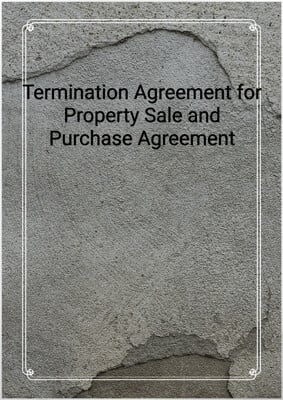How to Tailor the Document for Your Need?
01
Create Document
Fill in the details of the parties. You can click the "Fill with Member’s Information" button to complete it with information saved to your account.
02
Fill Information
Please fill in any additional information by following the step-by-step guide on the left hand side of the preview document and click the "Next" button.
03
Get Document
When you are done, click the "Get Document" button and you can download the document in Word or PDF format.
04
Review Document
The document should be signed by the authorised signatory (or directors of a company) and witnessed to complete the formality.
Document Preview
Document Description
The Warranty Deed is a legal document that is used to transfer ownership of real estate property from one party (the grantor) to another party (the grantee). This document is of utmost importance as it serves as evidence of the transfer of ownership and provides protection to the grantee against any claims or disputes regarding the property.
The entire document consists of several sections that are crucial for a comprehensive understanding of the rights and responsibilities of both the grantor and the grantee.
Section 1: Introduction
This section provides the basic information about the parties involved in the transaction. It includes the names and addresses of the grantor and the grantee, establishing their identities and contact details.
Section 2: Description of the Property
In this section, a detailed description of the real estate property being transferred is provided. It includes the location, boundaries, and any other relevant details that accurately identify the property.
Section 3: Tax Statements
Here, it is stated that all future tax statements related to the property will be mailed to a specific address. This ensures that the grantee receives all necessary tax information and can fulfill their obligations as the new owner.
Section 4: Covenants of the Grantor
This section outlines the covenants made by the grantor to the grantee. These covenants include:
- Valid Title and Right to Convey: The grantor guarantees that they have a valid title to the property and the right to transfer it to the grantee.
- Absence of Encumbrances: The grantor assures that there are no encumbrances or liens on the property, except as mentioned in the document.
- Possession and Non-Ejection: The grantor guarantees that the grantee and their heirs will have full possession of the property and will not be ejected from it.
- Defense of Title: The grantor promises to defend the grantee against any claims or disputes regarding their right to the property.
- Cure of Title Defects: The grantor agrees to take any necessary actions to rectify any defects in the title conveyed to the grantee.
Section 5: Execution and Witnesses
This section includes the signatures and seals of the grantor and the grantee, along with the names and signatures of witnesses. It also mentions that the document was acknowledged before a notary public.
Section 6: Notary Public
This section provides the details of the notary public who acknowledged the document, including their title and the expiration date of their commission.
Overall, the Warranty Deed is a comprehensive legal document that ensures a smooth and secure transfer of ownership of real estate property. It establishes the rights and responsibilities of both parties involved and provides protection against any potential disputes or claims.
How to use this document?
1. Enter the Parties' Information: Fill in the names and addresses of the grantor and the grantee in the designated fields. This will clearly identify the parties involved in the transaction.
2. Describe the Property: Provide a detailed description of the real estate property being transferred. Include the location, boundaries, and any other relevant details that accurately identify the property.
3. Specify Tax Statement Address: Indicate the address to which all future tax statements related to the property should be mailed. This ensures that the grantee receives the necessary tax information.
4. Understand the Grantor's Covenants: Familiarize yourself with the covenants made by the grantor, which include the guarantee of a valid title, absence of encumbrances, assurance of possession, defense of title, and commitment to cure any title defects.
5. Sign and Seal the Document: Both the grantor and the grantee should sign and seal the document in the presence of witnesses. Ensure that the witnesses also provide their names and signatures.
6. Notarize the Document: Have the document acknowledged before a notary public. The notary public will verify the identities of the parties and attest to the authenticity of the signatures.
7. Retain a Copy: Keep a copy of the executed and notarized Warranty Deed for your records. This will serve as proof of the transfer of ownership and protect your rights as the grantee.
8. Seek Legal Advice if Needed: If you have any doubts or concerns regarding the Warranty Deed or the transfer of ownership, consult with a qualified attorney who specializes in real estate law. They can provide guidance and ensure that your interests are protected throughout the process.
Not the right document?
Don’t worry, we have thousands of documents for you to choose from:














